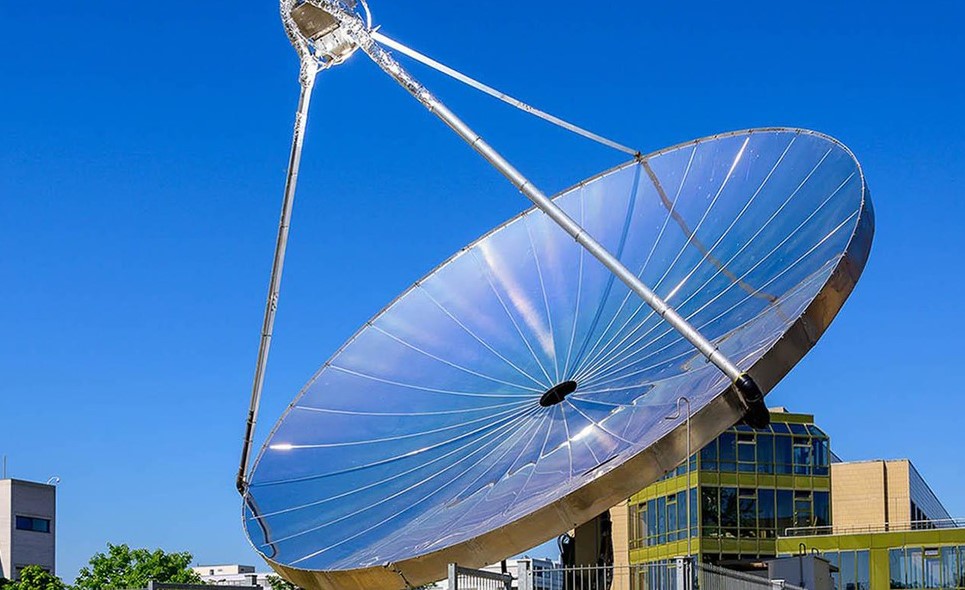Switzerland – EPFL (École polytechnique fédérale de Lausanne) researchers have built a pilot-scale solar reactor that produces usable heat and oxygen, in addition to generating hydrogen with unprecedented efficiency for its size.
The reactor is built on the campus, with a parabolic dish that concentrates solar radiation nearly 1,000 times. The reactor above the dish uses that sunlight to convert water into valuable and renewable hydrogen, oxygen, and heat. The system is unique for its ability to also produce heat and oxygen at scale. The oxygen molecules released by the photo-electrolysis reaction are also recovered and used for medical applications.
System deployment
EPFL start-up, SoHHytec SA, is already deploying and commercializing the system. The start-up is working with a Swiss-based metal production facility to build a demonstration plant at the multi-100-kilowatt scale that will produce hydrogen for metal annealing processes, oxygen for nearby hospitals, and heat for the factory’s hot-water needs. The system could be used to provide residential and commercial central heating and hot water, and to power hydrogen fuel cells.
Commercial realization
With an output power of over 2 kilowatts, the system has cracked the 1-kilowatt ceiling for their pilot reactor while maintaining record-high efficiency for this large scale. The hydrogen production rate achieved in this work represents a really encouraging step towards the commercial realization of this technology. The system is suitable for industrial, commercial, and residential applications. At an output level of about half a kilogram of solar hydrogen per day, the EPFL campus system could power around 1.5 hydrogen fuel cell vehicles driving an average annual distance.
The EPFL researchers plan to work on a large-scale solar-powered system that would split carbon dioxide instead of water, yielding useful materials like syngas for liquid fuel or the green plastic precursor ethylene.





